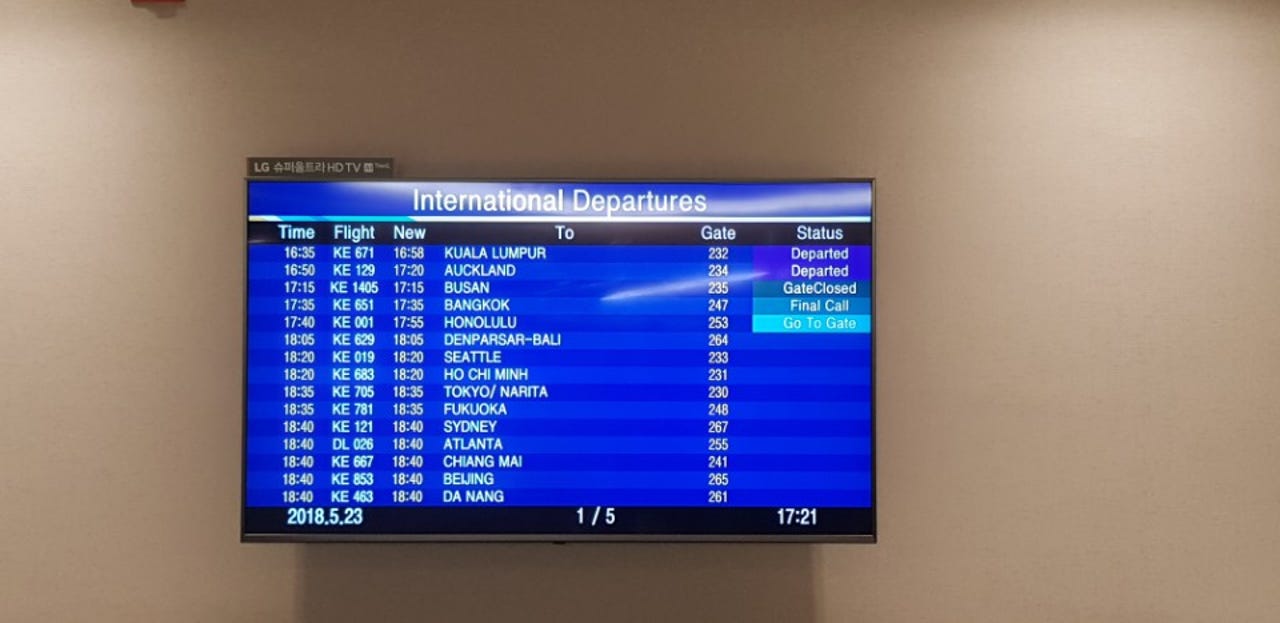LG switches airport OLED to LCD amid burn-in row


LG has installed this Super Ultra HD LCD TV at the lounge where originally a 2018-model OLED TV that suffered burn-in was.
LG Electronics has switched its 2018 model OLED TV on display at a South Korean airport to LCD due to burn-in problems, sources told ZDNet.
The affected OLED TV, installed at Korean Air Miler Club Lounge at the Incheon International Airport's second terminal in January, showed burn-in marks after only three months. The TV, which was being used to show departure schedules, had a burnt-in thick white line between the heading and the graphical table when it switched images.
LG attempted to install a new OLED TV in its place but opted for a Liquid Crystal Display (LCD) model -- Super Ultra HD TV -- instead. It was not confident in solving the fundamental issue of burn-in by replacing it with another OLED, sources said. LCD technology has been in use for decades without burn-in and is used for mass and premium models by most TV vendors.
The South Korean tech giant installed 40 OLED TVs at four lounges at 29 at the second terminal's lobby earlier this year to promote the 2018 models. Airports are an important marketing hot spot for TV makers such as Samsung and LG to show off their latest premium products.
Concerns over OLED TVs' long-term reliability due to burn-in has risen concurrently with the technology's commercial launch five years ago.
Burn-in refers to permanent image retention, usually caused by leaving a static image on the screen for a long period of time. The problem is especially pronounced for OLED, and PDP, that control individual pixels. Each pixel emits its own light which causes a difference in lifespan, which in turn can cause the retention.
TV reviews site RTings.com has been conducting a burn-in test on six 2017 OLED TVs since January this year. Uniformity issues were clearly visible after the four-week stage. LG engineers visited the site's lab and confirmed the issues were a result of a factory problem and that some panels were more prone than others.
This has been pointed out as an issue as consumers conventionally use one TV for a long time. LG has denied the problem, saying its TVs can last 30,000 hours, or around 10 years with an average daily viewing of eight hours, without burn-ins.
LG was unavailable for comment.
Related Coverage
LG shows off 77-inch transparent flexible display
LG Display has shown off next-generation displays, including a 77-inch transparent flexible OLED, at SID tradeshow in LA.
LG Display develops AI to reduce VR latency
LG Display has developed an artificial intelligence-based high-resolution content generating technology for virtual reality that reduces latency and blurs.
LG resolves keyboard vulnerabilities which allow remote code execution attacks
The severe security flaws impact mainstream LG smartphones.
Google and LG's high-resolution OLED display sets stage for future of enterprise AR and VR (TechRepublic)
The new displays are about half as good as human eyes but require massive amounts of processing power.
LG bets on artificial intelligence for real differentiation
The company's latest G-series smartphone, which may remain so for a while, is heading to the right destination. However, the path it's taking is a familiar one in sticking close to Google.